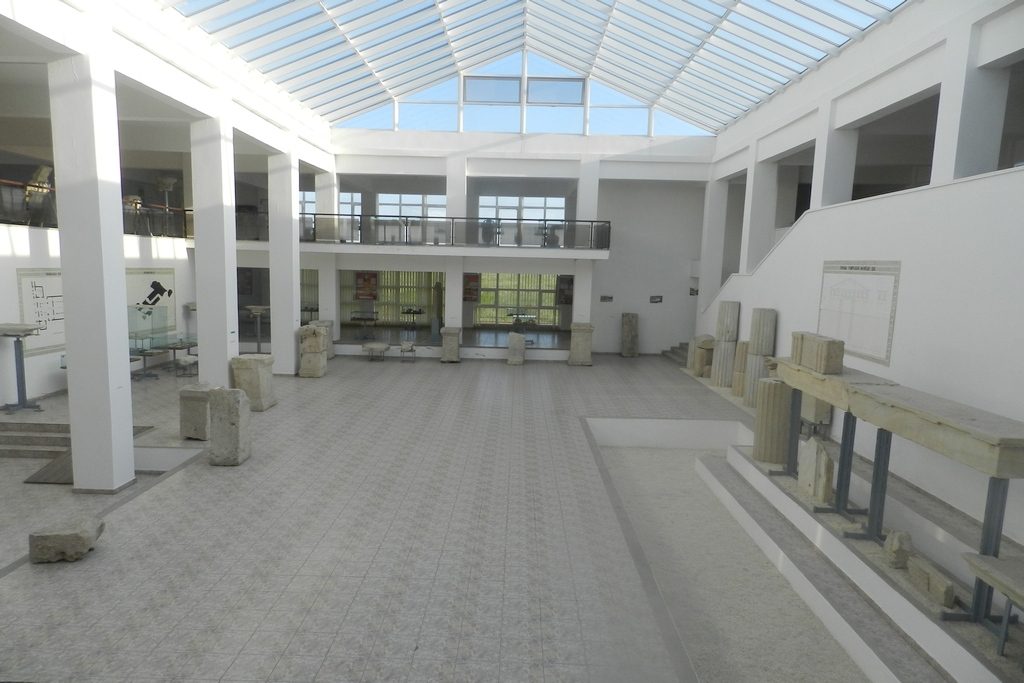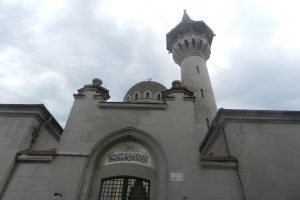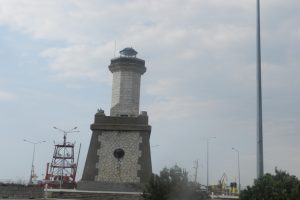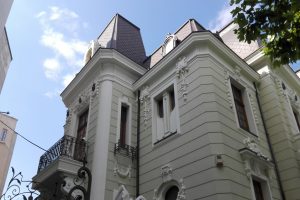

Histria Museum Complex houses some of the most important discoveries from the fortress and its territory. The collection consists of pottery and stone pots, personal and household objects, sculptures, architectural pieces, inscriptions. They are distributed on eras (Greek and Roman, Late Roman), aiming their sequence in time. Thus, the downstairs rooms are destined to Archaic, Classical and Hellenistic Histria, and those from upstairs to Roman and Late Roman Histria.
At the entrance, one can admire a beautiful marble frieze, belonging to a Histrian monument, from the late II-nd century, the early Ist century BC It was identified in the immediate vicinity of civil basilica, located on the south side of the street that starts from the main gate of the fortress, to the east. Designed in neoatic style, the relief depicts on the front side images of Apollo, Hephaistos, Poseidon, Eros, Aphrodite, Athena, Zeus, Hermes and Hera, and on the side faces the figure of Apollo as Helios. In the first room (L-shaped) after a showcase where are exhibited the main publications on Histria, there follows other five including ceramic fragments belonging to the cultures: Hamangia (early eneolithic, around 5.000-4.500 years BC.) and Babadag (XI-VII centuries BC.) (see the map). Between them is placed a menhir statue discovered at Hamangia (Baia) in a mound dating from the early Bronze Era (the beginning of the IIIrd millennium BC.). Follows a series of showcases that include archaic, Greek-Oriental pottery (late VII century-VI century BC.): (bowls, amphorae from Clazomenes), Corinthian, Attic with black figures, fragments of stone pots, terracotta votive statues, a malachite pond.
In the next room one can see a fragment of Kuros (marble, 560-550 BC., probably in Milesian style) and a very nice capital of parastas, dating from the first half of the Vthcentury BC. Along with this impressive capital, other marble architectural fragments belonging to the decoration of the same building or to other temples, complete the image of the exceptional development of the fortress during the centuries V and IV BC.
Leaving the rooms from the ground floor, the visitor can admire a series of altars, stars and other votive or funerary sculptures. We only remind of the altar dedicated to Asklepios, which mentions the cult origin of this god: Pergamum city. On the right side are exhibited some architectural pieces: Ionic capitals, ionic with transom (Paleochristian) and a late Roman Corinthian capital.




